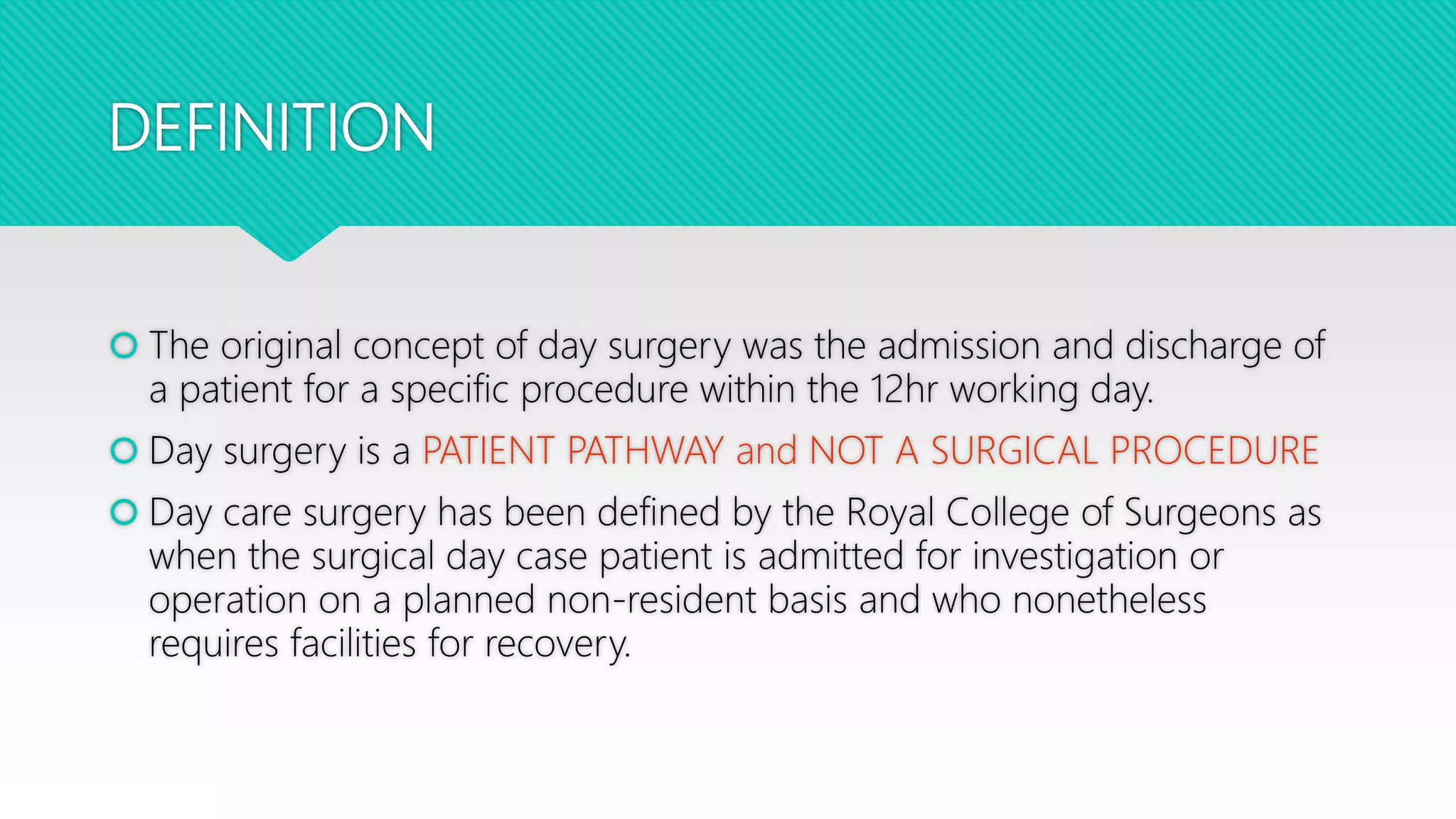The document discusses ambulatory or day surgery. It defines day surgery as when a patient is admitted for a procedure and discharged within 12 hours. Day surgery has advantages over traditional inpatient surgery like lower costs, faster recovery, and less disruption to daily life. The document outlines patient selection criteria, common procedures performed as day surgery, and important considerations for the preoperative, intraoperative, and postoperative periods to facilitate day surgery and recovery.











































































